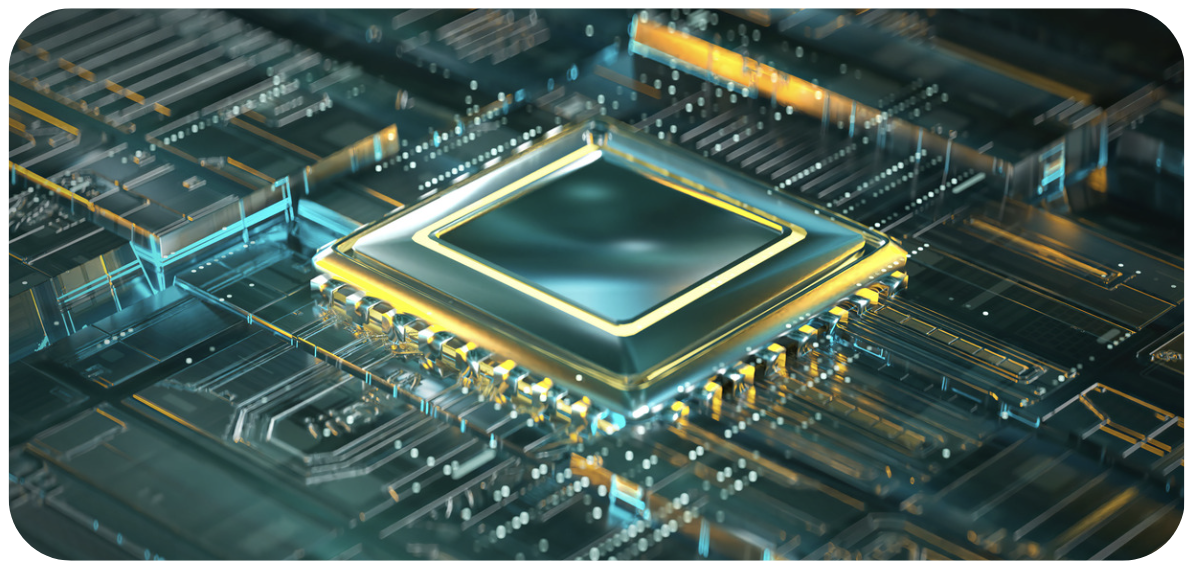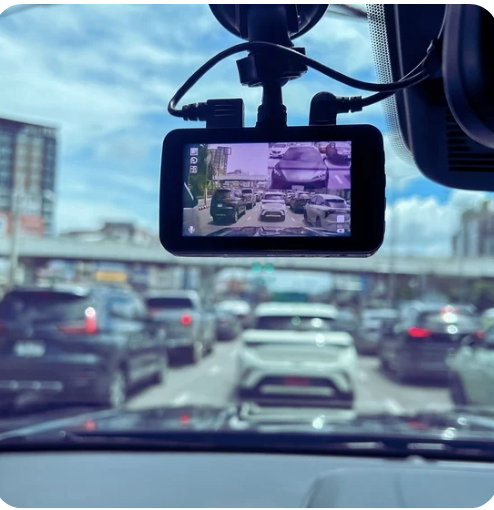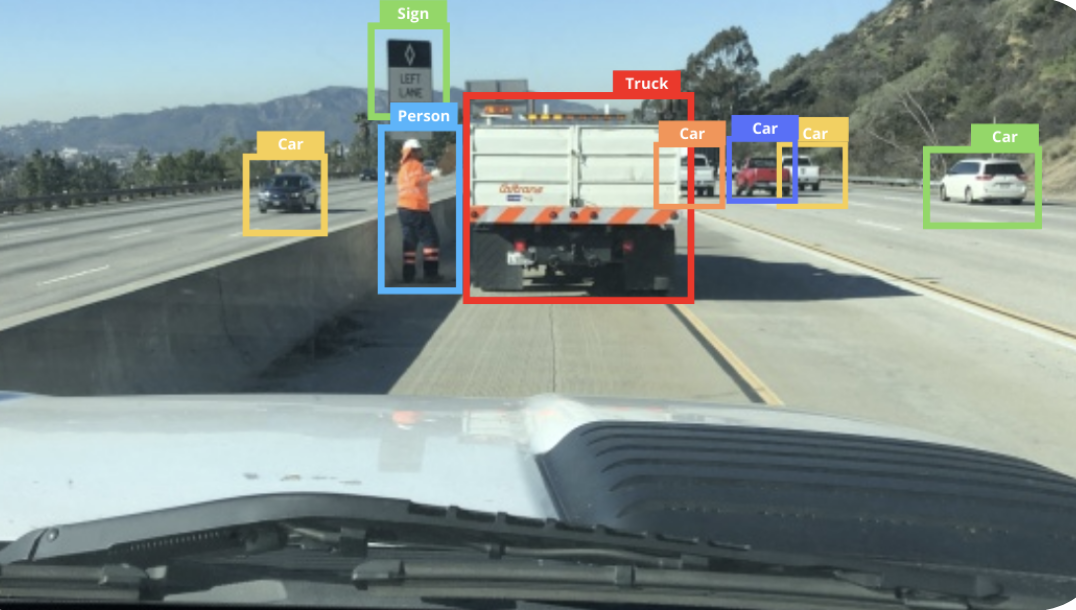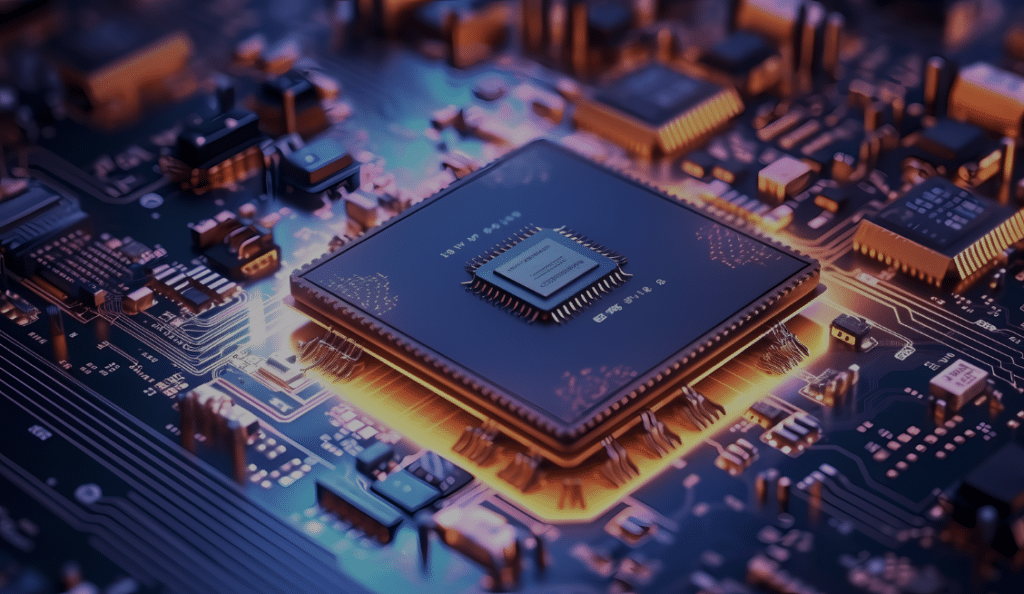This blog post was originally published at Au-Zone Technologies’ website. It is reprinted here with the permission of Au-Zone Technologies.
Optimizing AI-based video telematics deployments on constrained SoCs platforms
The demand for advanced video telematics systems is growing rapidly as companies seek to enhance road safety, improve operational efficiency, and manage liability costs with AI-powered insights. These systems perform real-time video processing at the edge, integrating data from cameras, radar and LiDAR sensors with artificial intelligence (AI) to alert operators of potential roadway hazards, providing driver feedback and operational insights to fleet managers. Optimizing the AI models and Vision+Radar Pipelines for efficient performance on modern SoCs is essential for achieving low latency and high accuracy in power and cost constrained systems.
This case study explores market trends, real world challenges, and solutions in deploying AI at the edge, focusing on how Au-Zone Technologies’ expertise in AI optimization for SoCs can benefit video telematics solution providers.
Market Trends in Video Telematics
The video telematics industry is experiencing substantial growth, driven by safety regulations, fleet management needs, and the integration of AI-powered solutions.
Growth Forecasts
According to Research and Markets, the global installed base of video telematics systems will grow at a CAGR of 18.6% between 2023 and 2028, reaching 14.8 million units. North America, with its robust fleet infrastructure, will see installations rise from 4.9 million units in 2023 to 11.7 million by 2028.
Key Market Players
Major players in the sector include Geotab, Lytx, Streamax, Samsara, Trimble Transportation, and Verizon Connect, to name just a few. These companies have differentiated themselves with hardware solutions (like mobile DVRs), software platforms, AI-based safety features and cloud-based operations dashboards. The trend toward providing real-time video intelligence for fleet management systems underscores the importance of optimizing AI models to function efficiently and reliably on highly constrained edge devices.

The Role of SoCs in Edge AI Technology
Semiconductor manufacturers enable edge AI compute by providing powerful Systems on Chip (SoCs) that enable a wide range of tasks including dedcated support for AI workloads with integrated NPU’s. Edge AI offers several advantages to these deployments:
- Reduced Latency: Processing data on the device reduces the need for constant cloud communication, ensuring real-time insights and operator warnings.
- Enhanced Privacy: Sensitive data is processed locally, which minimizes privacy risks.
- Improved Efficiency: AI models optimized for specific hardware use resources more effectively, enabling more complex models, higher resolution and frame rates, all on power efficient hardware platforms.
However, achieving optimal performance on these chips requires specialized expertise. This is where Au-Zone Technologies provides a key advantage.
Challenges in AI Deployment for Video Telematics Providers
While the benefits of video telematics are well-documented, providers face several technical and commercial challenges deploying AI models on edge devices:
- Hardware Constraints: Vision pipelines and AI models need to be optimized to run efficiently on hardware, especially at the edge. This includes GPUs and NPUs (Neural Processing Units) and efficient vision pipelines that leverage available hardware acceleration. Without proper optimization, performance data bottlenecks arise, reducing the data throughput, processing and overall effectiveness in detecting and analyzing events in real-time.
- High Computational Demand: AI models for video analytics, such as object detection and behaviour recognition, are computationally expensive. Efficiently mapping these algorithms to target SoCs requires expertise in low-level operations to leverage hardware acceleration and ensure efficient use of resources.
- Seamless Data Flow: For AI models to function effectively in real world conditions, a reliable video pipeline is essential to capture, process, and analyze data in real-time. Any disruptions or inefficiencies can impair performance and accuracy.

Au-Zone’s Expertise in Optimizing AI for Common SoCs
Au-Zone Technologies specializes in AI deployment and visual perception, helping video telematics OEMs overcome the technical barriers associated with AI deployments on common SoC’s.
- Low-Level Model Optimization: Au-Zone translates high-level AI operations into efficient instructions for deployment on ARM based CPU’s as well as GPUs and NPUs. This low-level optimization ensures that AI models fully utilize the hardware’s capabilities, balancing high-performance results without overloading resources
- Building Scalable Video Pipelines: Au-Zone has developed a robust video processing pipeline, ensuring that images captured from the sensors are processed efficiently, enabling real-time analysis at full resolution and frame rates. This streamlined data flow supports critical functions like hazard detections, driver alerts, behaviour warnings without latency issues.
- Seamless Integration of New AI Components: As technology evolves, Au-Zone assists video telematics providers in integrating new AI advancements onto their platforms. This enables providers to stay ahead of industry trends and continuously improve their offerings.

Benefits of Au-Zone’s Optimization for Video Telematics OEM’s
The collaboration between Au Zone Technologies and its video telematics clients has delivered several key benefits:
- Optimized Performance: AI models run efficiently on SoC’s, unlocking the hardware’s full potential and enabling advanced features such as real-time alerts.
- New Feature Enablement: Au-Zone’s optimizations allow providers to introduce new capabilities, including risk detection algorithms and predictive analytics, which were previously limited by hardware constraints.
- Scalable, Reliable Systems: With Au-Zone’s optimized video pipeline, providers deliver faster, more accurate insights to their customers, improving both safety and fleet efficiency.
- Long-Term Collaboration: Au-Zone continues to work with its partners to integrate future AI advancements, ensuring sustained growth and competitiveness in the market.
Conclusion: Positioning for Future Growth
The partnership between Au-Zone Technologies and video telematics providers illustrates the importance of AI optimization for achieving superior performance on edge devices. As the market continues to grow, and with the continuous evolution of AI Models and SoCs, providers must leverage expert technical support to remain competitive and minimize time to market.
By enabling new features, enhancing efficiency, and providing scalable solutions, Au-Zone has positioned itself as a strategic partner for companies operating at the intersection of AI, visual telematics, and edge computing. As AI technology evolves, Au Zone’s expertise will remain pivotal in driving innovation and maintaining high safety and operational efficiency standards for video telematics providers.
Reference
Research and Markets. (2024). Global Video Telematics Market Report 2024-2028: https://www.globenewswire.com/news-release/2024/04/18/2865146/28124/en/Global-Video-Telematics-Market-Report-2024-2028-Streamax-Video telematics system providers-and-Samsara-Remain-the-Leading-Video-Telematics-Players-in-their-Respective-Categories.html



